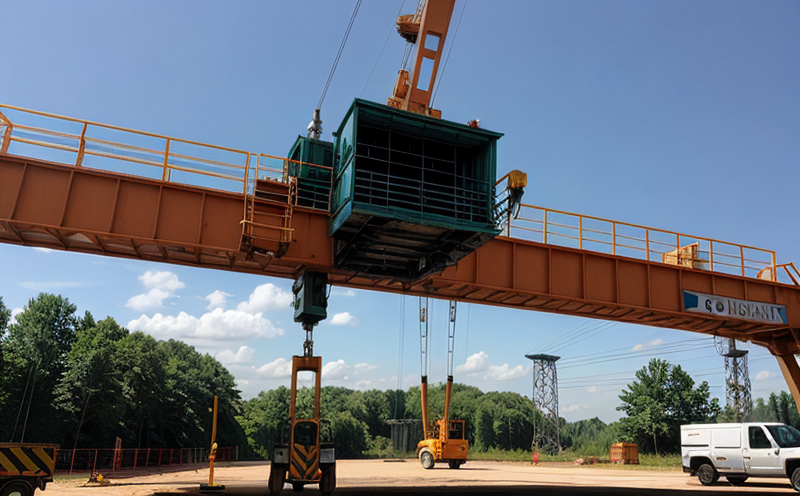Portal Crane Inspection
The inspection of portal cranes is a critical component in ensuring workplace safety and compliance with international standards. Portal cranes, also known as gantry cranes or bridge cranes, are widely used in industries such as manufacturing, construction, warehousing, and ports for lifting heavy materials and equipment. These cranes are typically installed on a fixed runway and have a movable trolley that runs along the length of the runway to perform lifting operations.
Given their importance and frequent use, regular inspections are essential to prevent accidents caused by wear and tear or other structural issues. This inspection involves detailed examinations of critical components like the main girder, wheels, hoists, control systems, and safety devices. The primary goal is to ensure that these cranes continue to operate safely and efficiently.
The International Organization for Standardization (ISO) and American Society for Testing and Materials (ASTM) provide guidelines for the inspection of portal cranes. ISO 3691-2 specifies general requirements, while ASTM E858 covers visual inspections of overhead travelling cranes, including portal cranes.
During an inspection, a trained professional will visually assess the condition of the crane's components and may use non-destructive testing (NDT) methods such as ultrasonic testing or magnetic particle inspection to detect hidden defects. The inspection also includes functional tests to ensure all safety features are operational, including emergency stop buttons, limit switches, and overload protection systems.
Regular inspections not only enhance safety but also extend the useful life of the crane by identifying potential issues early on. This proactive approach can help reduce maintenance costs, improve productivity, and comply with legal requirements set forth by regulatory bodies such as OSHA (Occupational Safety and Health Administration) in the United States.
The inspection process typically involves several steps:
- Visual examination of all visible components
- Measurement checks to ensure structural integrity
- Functional testing of all safety devices
- Use of NDT techniques where necessary
- Documentation and reporting of findings
The results of the inspection are typically documented in a detailed report that includes photographs, measurements, and descriptions of any defects or issues identified. This report serves as a valuable reference for future inspections and maintenance activities.
Benefits
- Enhanced safety for workers using the crane
- Extended lifespan of the equipment through early detection of wear and tear
- Cost savings due to reduced downtime and fewer repairs
- Compliance with regulatory requirements and insurance policy stipulations
- Potential reduction in liability risks associated with accidents or injuries
Industry Applications
| Industry | Critical Components Inspected |
|---|---|
| Manufacturing | Main girders, wheels, hoists, control systems |
| Construction | Railway tracks and supports, trolleys, load handling devices |
| Warehousing | Support structures, lifting mechanisms, safety guards |
| Ports | Gantry cranes, runway systems, electrical connections |
Competitive Advantage and Market Impact
The regular inspection of portal cranes offers significant competitive advantages in terms of operational efficiency and safety. By ensuring that all critical components are functioning correctly, companies can minimize the risk of accidents and equipment failures. This not only protects employees but also enhances overall productivity by preventing unnecessary downtime.
In addition to enhancing workplace safety, comprehensive inspections contribute positively to a company's reputation for compliance with industry standards. This is particularly important in highly regulated sectors such as construction or manufacturing where safety is paramount. The ability to demonstrate adherence to strict inspection protocols can be a key differentiator in competitive markets.
From a market perspective, the demand for reliable and safe lifting equipment continues to grow as industries expand their operations. By investing in regular inspections, companies position themselves at the forefront of best practices, making them more attractive to potential clients who prioritize safety and reliability.





